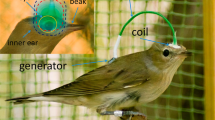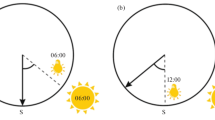Abstract.
A current model suggests that magnetoreception of compass information starts with light-dependent primary processes. Light-dependency of magnetoreception is supported by behavioral experiments with homing pigeons and caged migratory birds. Three passerine species showed normal orientation under dim monochromatic light from the blue-green range of the spectrum, while they were disoriented under yellow and red light. A sevenfold increase in intensity and pre-exposure to specific wavelengths caused changes in behavior. The behavioral data indicate a complex relationship between the wavelength of light and magnetoreception, suggesting the involvement of more than one type of receptors. Extracellular recordings from the nucleus of the basal optic root and the tectum opticum identified units that responded to changes in magnetic North. Each unit showed a peak in a distinct spatial direction, so that the input of these units, processed collectively and integrated, would indicate compass directions.
Similar content being viewed by others
Author information
Authors and Affiliations
Additional information
Electronic Publication
Rights and permissions
About this article
Cite this article
Wiltschko, W., Wiltschko, R. Magnetic compass orientation in birds and its physiological basis. Naturwissenschaften 89, 445–452 (2002). https://doi.org/10.1007/s00114-002-0356-5
Issue Date:
DOI: https://doi.org/10.1007/s00114-002-0356-5




